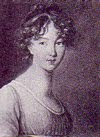This month’s quilt is a rather luxurious one and a departure from my usual taste in reproduction fabrics. It is a small quilt, made up of the Cumberland line of late 19th century reproduction fabrics designed by Fons & Porter for Benartex, Inc. One of the dolls gets to have it on his bed for a month or so in the early summer, probably because of all of that fabulous yellow in it.
I have,
therefore, included another one that is just of some of the materials so as to
better show off their richness and elegance. I was, in fact, a little
overwhelmed by that richness and elegance, and could not come up with a satisfactory
design for a large quilt that I felt would do the Cumberland line justice so I
made a small one instead.







